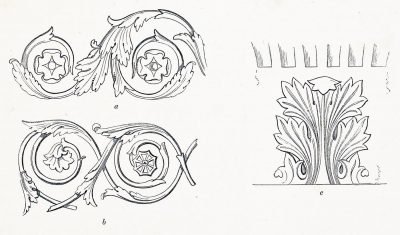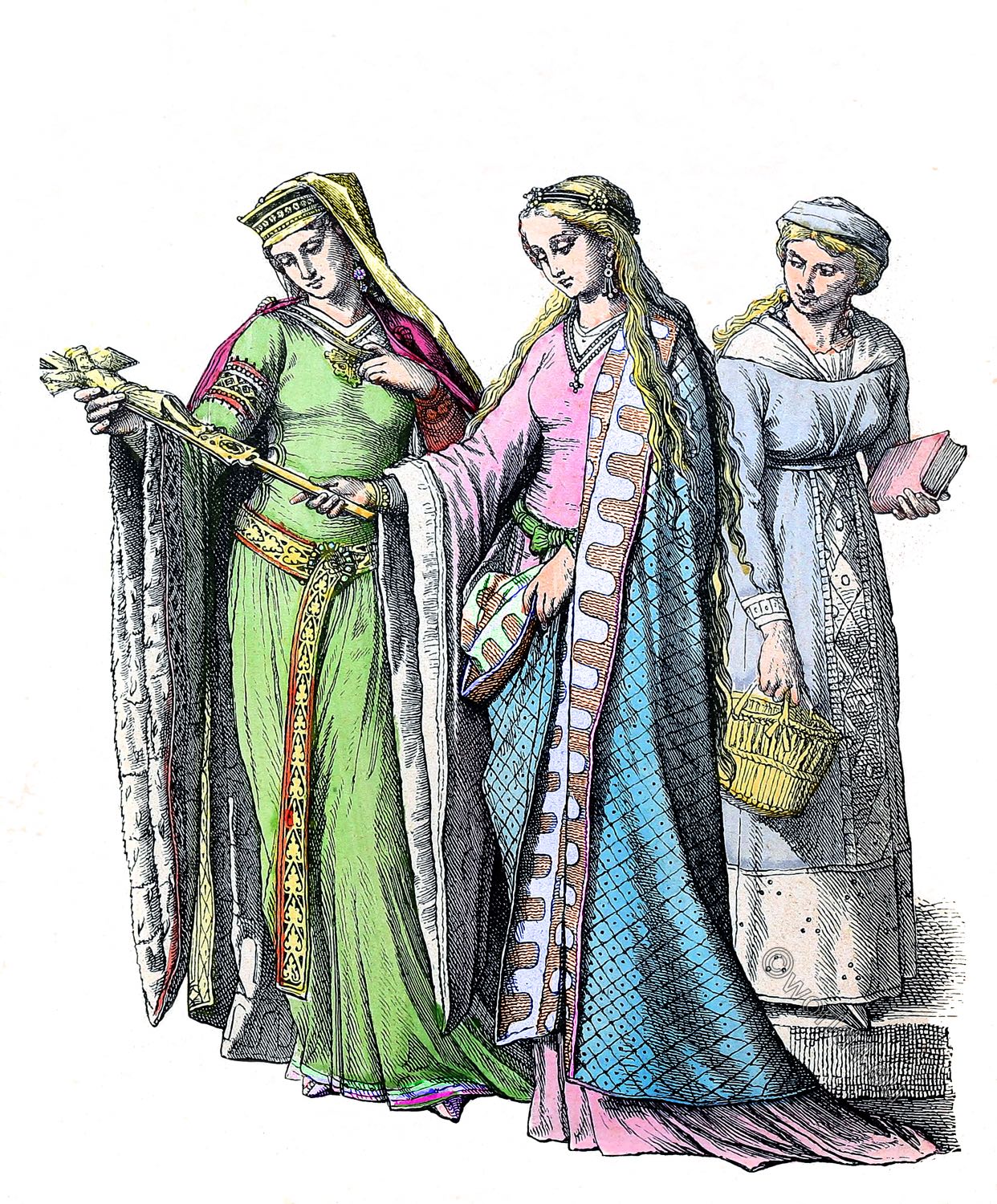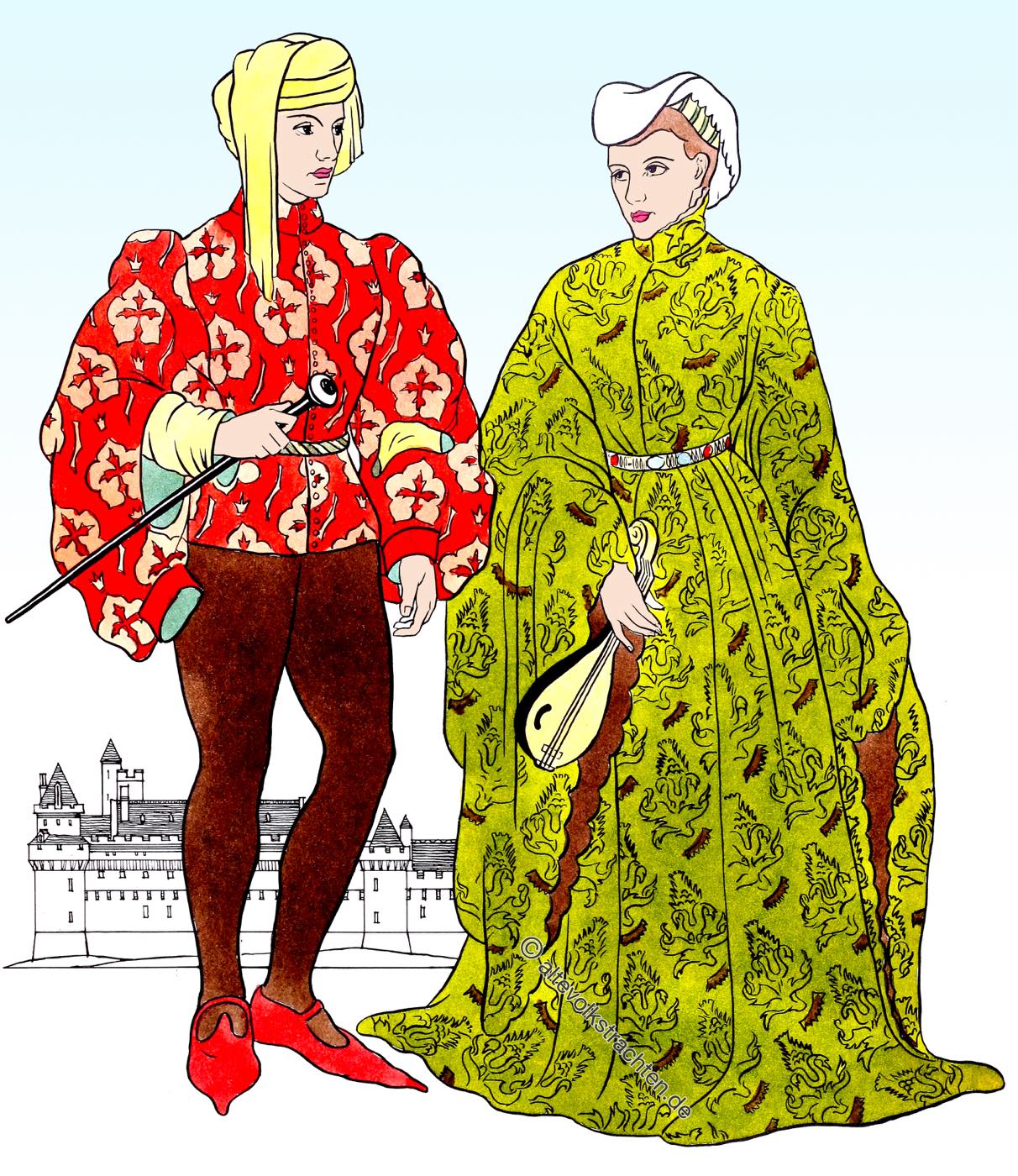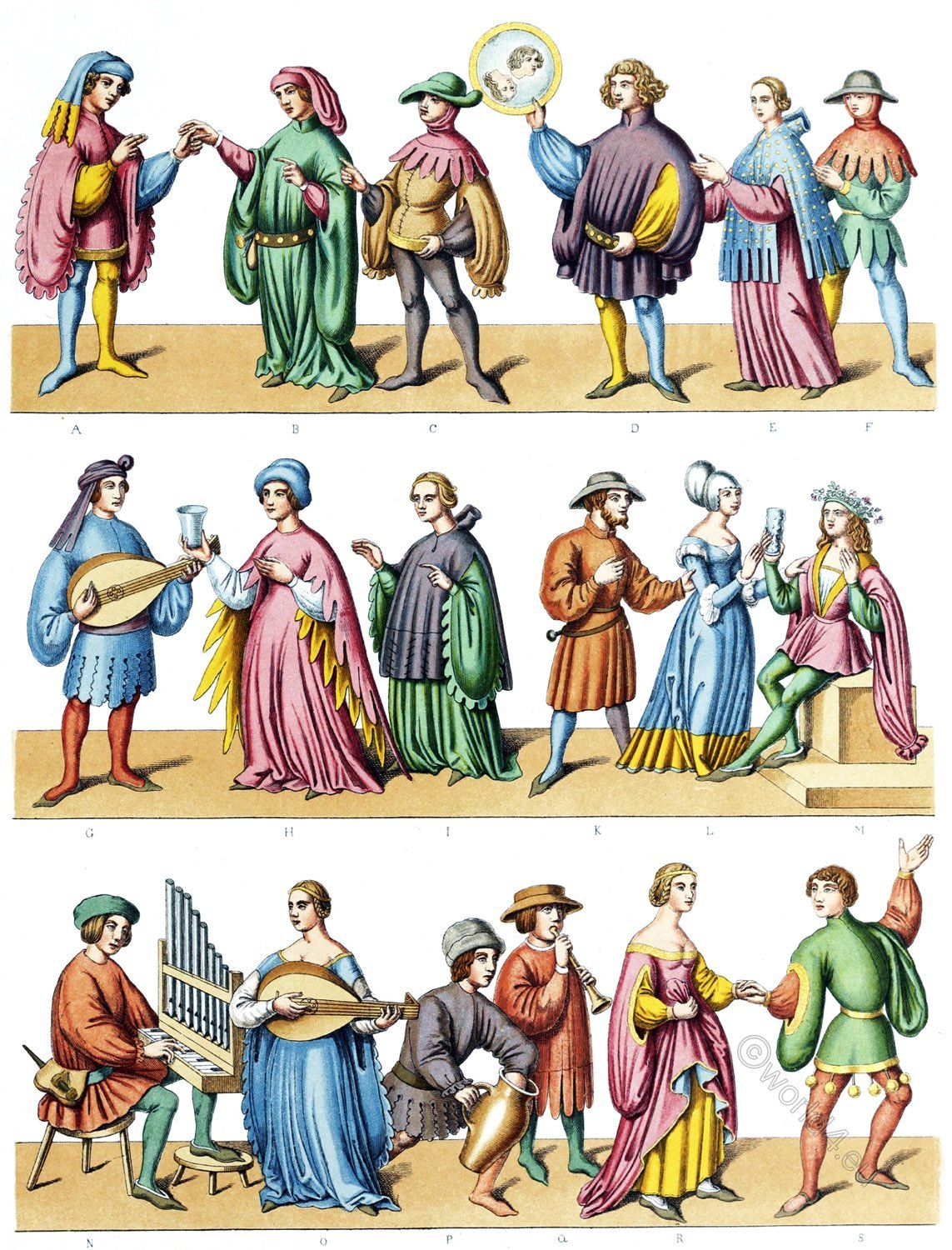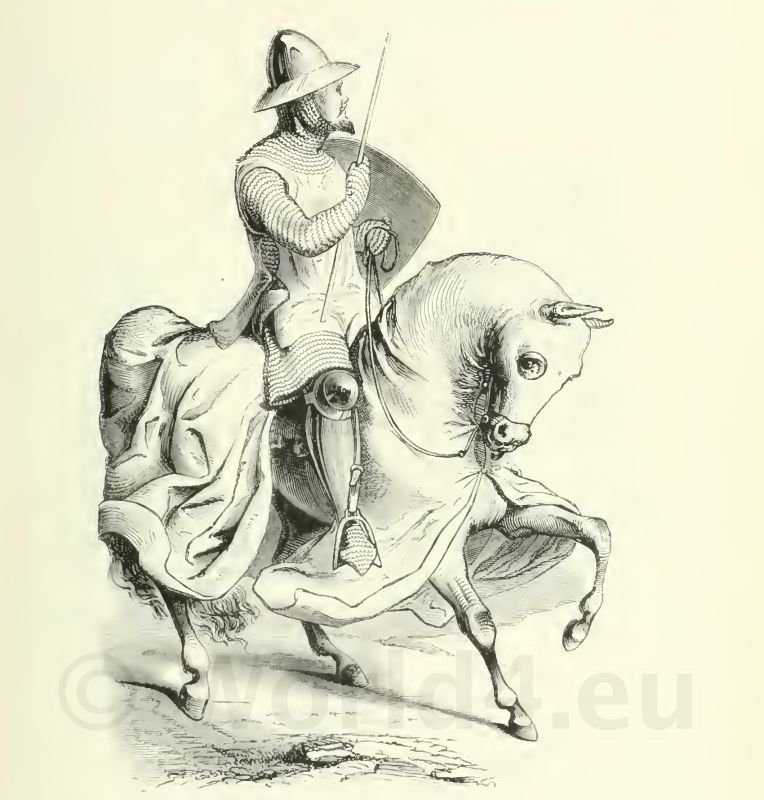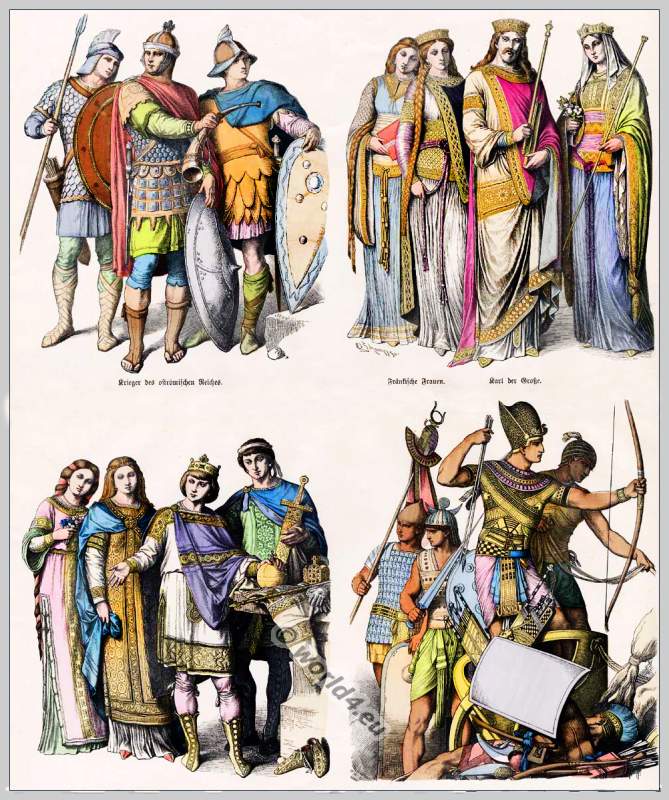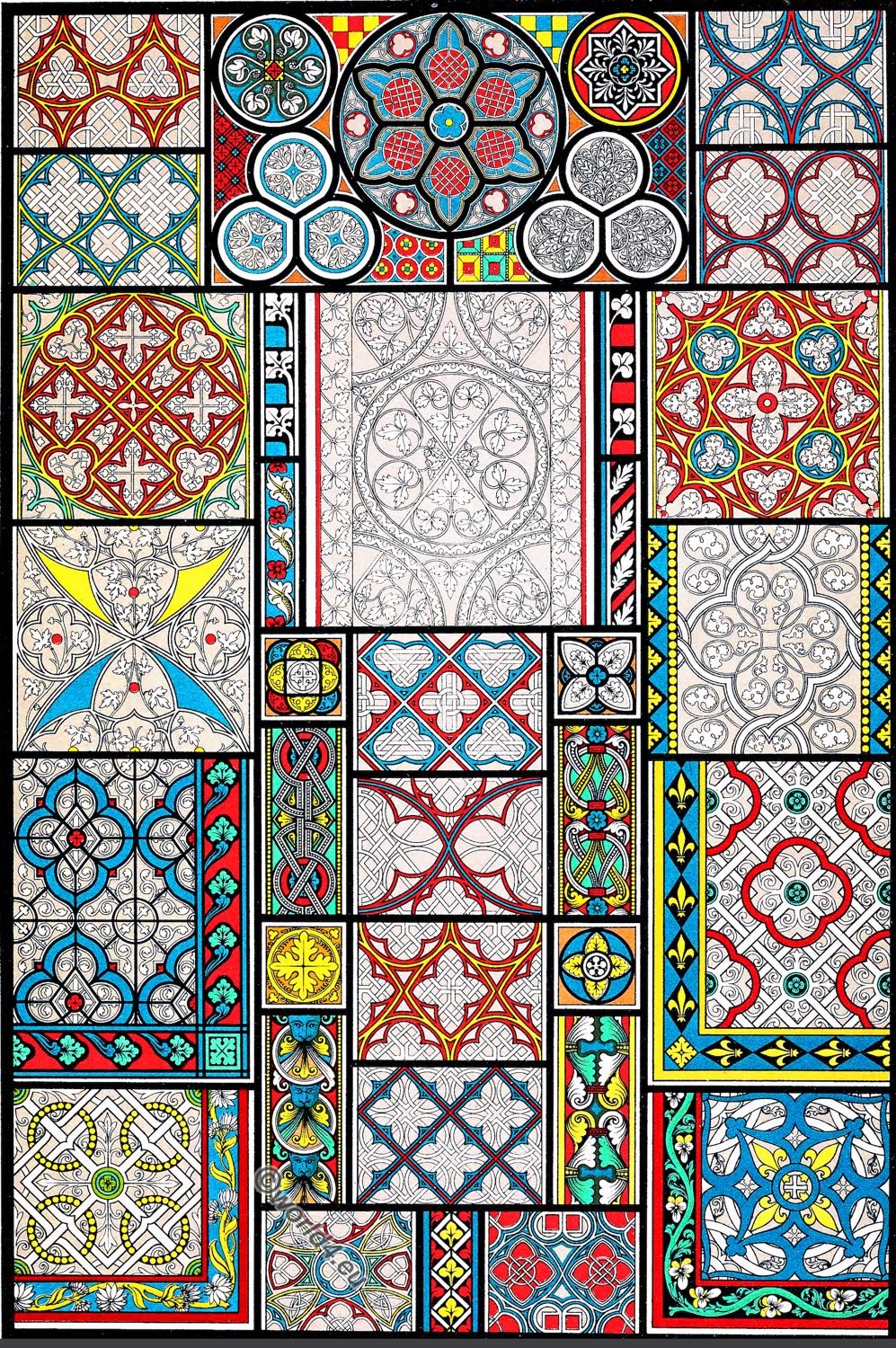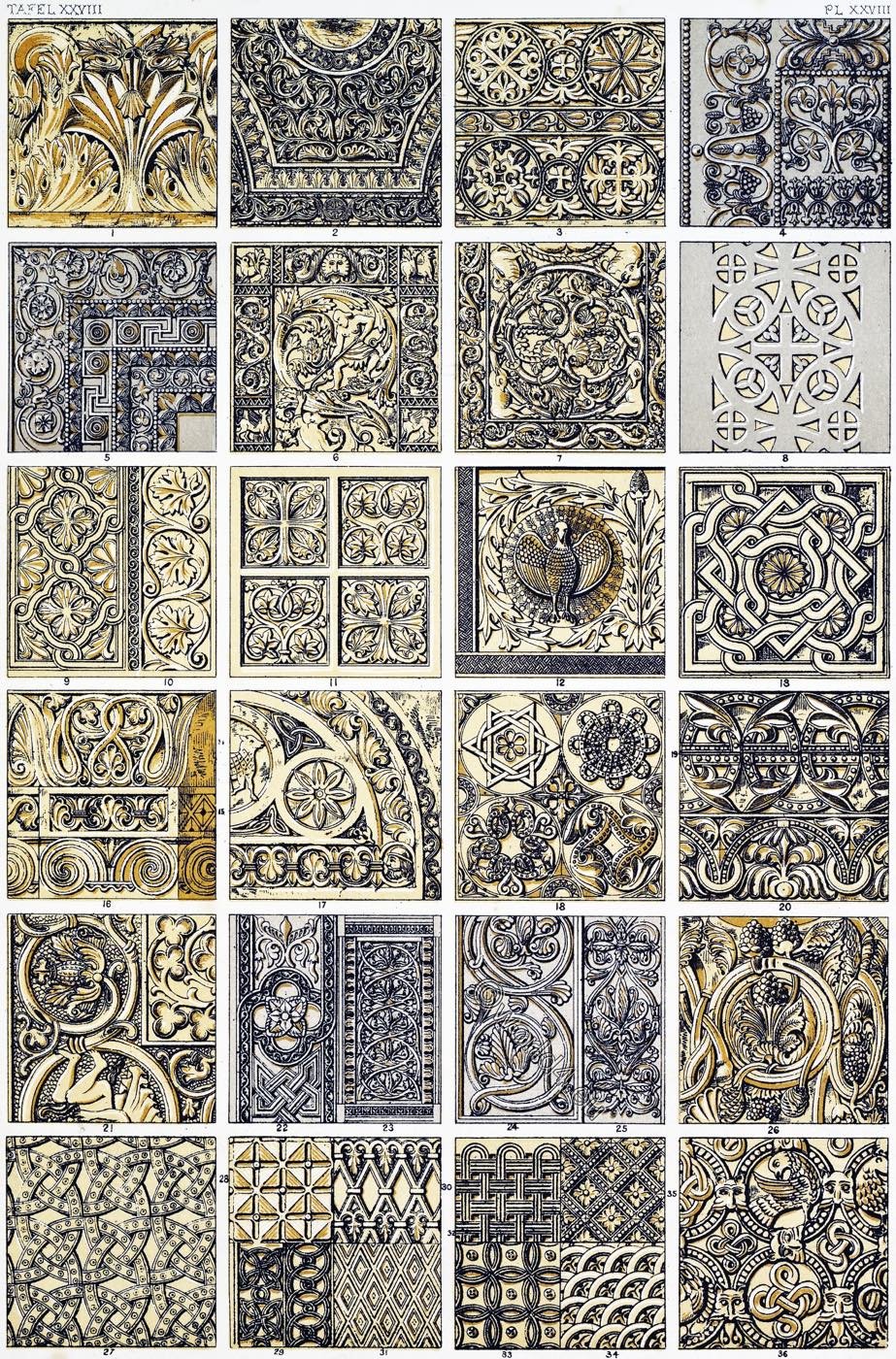
The Byzantine Ornament.
PLATE XXVIII.
- 1, 2, 3. Stone Sculptured Ornament, Sta. Sofia, Constantinople. 6th century. – SALZENBERG, Ancient Christian Monuments, Constantinople.
- 4, 5. From the Bronze Gates, Sta. Sofia. – SALZENBERG, u. a.
- 6, 7. Portions of Ivory Diptychs, Beauvais Cathedral; apparently Anglo-Saxon work of the 11th century. – WILLEMIN, Monuments Français inédits.
- 8. Portion of Bronze Door, Basilica of the Nativity, Bethlehem. 3rd or 4th century.-GAILHABAUD, L’Architecture et les Arts qui en dependent.
- 9-13. Stone Sculptures, from St. Mark’s, Venice. 11th century.- J. B. W. from Casts at Sydenham.
- 14, 15, 16. Portion of a Capital, St. Michael’s Church, Schwäbisch Hall. 12th century. – HEIDELOFF, Ornamentation of the Middle Ages.
- 17. From a Doorway, preserved at Murrhard Monastery. – HEIDELOFF, u. a.
- 18. Composition of Bosses, from St. Sebald, Nuremberg, and the Church of Nosson, Saxony. – HEIDELOFF.
- 19, 20. Friezes from the Church of St. John, Gmund, Swabia. – HEIDELOFF.
- 21. Romanesque Wood and Ivory Carving, in tho Collection of Herr Leven, Cologne. – HEIDELOFF.
- 22. From the principal Bronze Door, Monreale, near Palermo. 11th and 12th century.
- 23. From the Bronze Door of the Duomo, Ravello, near Amalfi. 11th and 12th century.
- 24, 25. From the Bronze Door of the Duomo, Trani. 12th century.
- 26. Stone Sculpture, from the small Cloister, Huelgas Monastery, near Burgos, Spain. 12th century.
- 27. From the Porch of Lucca Cathedral. Circa 1204 A.D.
- 28. From St. Denis (Porch), near Paris. 12th century.
- 29. From the Cloisters of Sant’ Ambrogia, Milan.
- 30. From the Chapel of Heilsbronn, Bavaria.
- 31. From St. Denis.
- 32. From Bayeux Cathedral. 12th century.
- 33. From St. Denis.
- 34. From Bayeux Cathedral.
- 35. From Lincoln Cathedral Porch. Close of 12th century.
- 36. From the Kilpeck Porch, Herefordshire. 12th century.
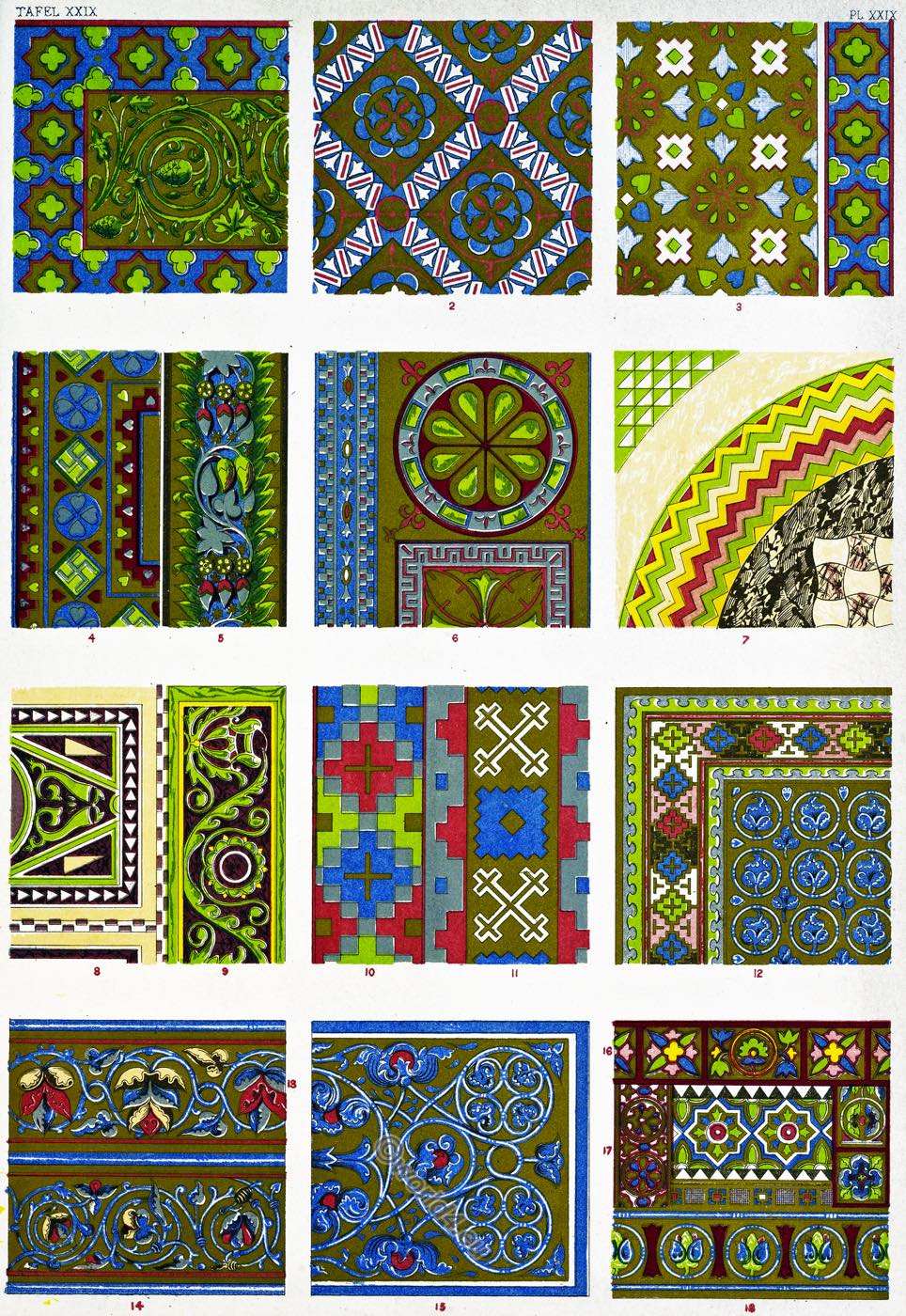
PLATE XXIX.
- 1-6. Mosaics from Sta. Sofia, Constantinople. 6th century.
- 7. Marble Pavement, Agios Pantokrator, Constantinople. First half of 12th century.
- 8, 9. Marble Pavement, Sta. Sofia.
- 10, 11. Mosaics, Sta, Sofia.
- 12-15. From Illuminated Greek MSS., British Museum.
- 16, 17. Borders, from Illuminated Greek MSS.
- 18. The Centre, from St. Mark’s, Venice. – DIGBY WYATT, Mosaics of the Middle Ages.
- 19. From a Greek MS., British Museum. The border beneath from Monreale.
- 20. From the Homilies of Gregory Nazianzen. 12th century.
- 21, 22. From Greek MSS., British Museum.
- 23. From the Acts of the Apostles, Greek MS., Vatican Library, Rome.
- 24. St. Mark’s, Venice
- 25. Portion of a Greek Diptych. 10th century. Florence. (The fleurs-de-lys are believed to be of later workmanship.)
- 26. Enamel of the 13th century (French)
- 27. From an Enameled Casket (the centre from the Statue of Jean, son of St. Louis)
- 28. From the Enameled Tomb of Jean, son of St. Louis, a.d. 1247.
- 29. Limoges Enamel, probably of the close of the 12th century.
- 30. Portion of Mastic Pavement, 12th century. Preserved at St. Denis, near Paris
PLATE XXX.
1, 2. Mosaics (opus Grecanicum) from Monreale Cathedral, near Palermo. Close of 12th century.
3. Mosaics from the Church of Ara Coeli, Rome.
4, 5. Monreale Cathedral.
6. Marble Pavement, St. Mark’s, Venice.
7-10. From San Lorenzo Fuori, Rome. Close of 12th century
11. San Lorenzo Fuori, Rome.
12. Ara Coeli, Rome.
13. Marble Pavement, St. Mark’s, Venice.
14. San Lorenzo Fuori, Rome.
15, 16. Palermo. Mosaics of the Middle Ages.
17. From the Cathedral, Monreale
18. From Ara Coeli, Rome.
19. Marble Pavement, S.M.Maggiore, Rome.
20. Marble Pavement, San Vitale, Ravenna.
21. Marble Pavement, S. M. in Cosmedin, Rome.
22, 23. Mosaic, St. Mark’s, Venice.
24. Baptistery of St. Mark, Venice.
25. San Giovani Laterano, Rome. Mosaics of the middle ages.
26. The Duomo, Civita Castellana. Mosaics of the middle ages.
27. Ara Coeli, Rome. Architectural Art in Italy and Spain.
28. San Lorenzo, Rome.
29. Ara Coeli, Rome.
30. San Lorenzo, Rome.
31. San Lorenzo Fuori, Rome.
32. San Giovanni Laterano, Rome. Mosaics of the middle ages.
33-35. Monreale Cathedral.
36-38. Marble Pavement, S. M. Maggiore, Rome.
39. St. Mark’s, Venice.
40. From the Baptistery, St. Mark’s, Venice.
41. From St. Mark’s, Venice.
42. From the Duomo, Monreale.
THE BYZANTINE ORNAMENT.
THE vagueness with which writers on Art have treated the Byzantine and Romanesque styles of Architecture, even to within the last few years, has extended itself also to their concomitant decoration.
This vagueness has arisen chiefly from the want of examples to which the writer could refer; nor was it until the publication of Herr Salzenberg’s great work on Sta. Sofia at Constantinople, that we could obtain any complete and definite idea of what constituted pure Byzantine ornament.
San Vitale at Ravenna, though thoroughly Byzantine as to its architecture, still afforded us but a very incomplete notion of Byzantine ornamentation: San Marco at Venice represented but a phase of the Byzantine school; and the Cathedral of Monreale, and other examples of the same style in Sicily, served only to show the influence, but hardly to illustrate the true nature, of pure Byzantine Art: fully to understand that, we required what the ravages of time and the whitewash of the Mahommedan had deprived us of, namely, a Byzantine building on a grand scale, executed during the best period of the Byzantine epoch.
Such an invaluable source of information has been opened to us through the enlightenment of the present Sultan, and been made public to the world by the liberality of the Prussian Government; and we recommend all those who desire to have a graphic idea of what Byzantine decorative art truly was, to study Herr Salzenberg’s beautiful work on the churches and buildings of ancient Byzantium.
In no branch of art, probably, is the observation, ex nililo nihil fit (Nothing comes from nothing), more applicable than in decorative art. Thus, in the Byzantine style, we perceive that various schools have combined to form its peculiar characteristics, and we shall proceed to point out briefly what were the principal formative causes.
Even before the transfer of the seat of the Roman Empire from Rome to Byzantium, at the commencement of the fourth century, we see all the arts in a state either of decline or transformation. Certain as it is that Rome had given her peculiar style of art to the numerous foreign peoples ranged beneath her sway, it is no less certain that the hybrid art of her provinces had powerfully reacted on the centre of civilization; and even at the close of the third century had materially affected that lavish style of decoration which characterized the magnificent baths and other public buildings of Rome.
The necessity which Constantinople found himself under, when newly settled in Byzantium, of employing Oriental artists and workmen, wrought a still more vital and marked change in the traditional style; and there can be little doubt but that each surrounding nation aided in giving its impress to the newly-formed school, according to the state of its civilization and its capacity for Art, until at last the motley mass became fused into one systematic whole during the long and (for Art) prosperous reign of the first Justinian.
In this result we cannot fail to be struck with the important influence exercised by the great temples and theaters built in Asia Minor during the rule of the Caesars; in these we already see the tendency to elliptical curved outlines, acute-pointed leaves, and thin continuous foliage without the springing-ball and flower, which characterize Byzantine ornament.
On the frieze of the theatre at Patara (a), and at the Temple of Venus at Aphrodisias (Caria), are to be seen examples of flowing foliage such as we allude to. On the doorway of the temple erected by the native rulers of Galatia at Ancyra (b), in honor of Augustus, is a still more characteristic type, and the pilaster capital of a small temple at Patara (c), ascribed by Texier to the first century of the Christian era, is almost identical with one drawn by Salzenberg at Smyrna (d), which he believes to be of the first part of Justinian’s reign, or about the year 525 A.D.
In the absence of authentic dates we cannot decide satisfactorily how far Persia influenced the Byzantine style, but it is certain that Persian workmen and artists were much employed at Byzantium and in the remarkable monuments at Tak-i-Bustan (Taq-e Bostan or Taqwasân, Kermanshah Province, Iran), Bi-Sutoun, and Tak-i-Ghero, and in several ancient capitals at Isfahan — given in Flandin and Coste’s great work on Persia — we are struck at once with their thoroughly Byzantine character but we are inclined to believe that they are posterior, or at most contemporaneous, with the best period of Byzantine art, that is, of the sixth century.
However that may be, we find the forms of a still earlier period reproduced so late as the year 363 A.D.; and in Jovian’s column at Ancyra (e), erected during or shortly after his retreat with Julian’s army from their Persian expedition, we recognize an application of one of the most general ornamental forms of ancient Persepolis. At Persepolis also are to be seen the pointed and channelled leaves so characteristic of Byzantine work, as seen in the accompanying example from Sta. Sofia and at a later period, i. e. during the rule of the Caesars, we remark at the Doric temple of Kangovar (g) contours of moulding precisely similar to those affected in the Byzantine style.
Interesting and instructive as it is to trace the derivation of these forms in the Byzantine style, it is no less so to mark the transmission of them and of others to later epochs. Thus in No. 1, Plate XXVIII., we perceive the peculiar leaf, as given in Texier and in Salzenberg, reappear at Sta. Sofia; at No. 3, Plate XXVIII., is the foliated St. Andrew’s cross within a circle, so common as a Romanesque and Gothic ornament. On the same frieze is a design repeated with but slight alteration at No. 17, from Germany. The curved and foliated branch of No. 4 of the sixth century (Sta. Sofia) is seen reproduced, with slight variation, at No. 11 of the eleventh century (St. Mark’s). The toothings of the leaves of No. 19 (Germany) are almost identical with those of No. 1 (Sta. Sofia); and between all the examples on the last row but one (Plate XXVIII.) is to be remarked a generic resemblance in subjects from Germany, Italy, and Spain, founded on a Byzantine type.
The last row of subjects in this plate illustrates more especially the Romanesque style (Nos. 27 and 36), showing the interlaced ornament so affected by the Northern nations, founded mainly on a native type; whilst at No. 35 (St. Denis) we have one instance out of numbers of the reproduction of Roman models; the type of the present subject,-a common one in the Romanesque style,- being found on the Roman column at Cussy, between Dijon and Chalons-sur-Saone.
Thus we see that Rome, Syria, Persia, and other countries, a11 took part as formative causes in the Byzantine style of art, and its accompanying decoration, which, complete as we find it in Justinian’s time, reacted in its Dew and systemized form upon the Western world, undergoing certain changes in its course; and these modifying causes, arising from the state of religion, art, and manners in the countries where it was received, frequently gave it a. specific character, and produced in Borne cases co-relative and yet distinct styles of ornament in the Celtic, Anglo-Saxon, Lombardic, and Arabian schools. Placing on one side the question of how far Byzantine workmen or artists were employed in Europe, there can be no possible doubt that the character of the Byzantine school of ornament is very strongly impressed on all the earlier works of central and even Western Europe, which are generically termed Romanesque.
Pure Byzantine ornament is distinguished by broad-toothed and acute-pointed leaves, which in sculpture are bevelled at the edge, are deeply channelled throughout, and are drilled at the several springing of the teeth with deep holes; the running foliage is generally thin and continuous, as at Nos. 1, 14, and 20, Plate XXIX., Plate XXIX. The ground, whether in mosaic or painted work, is almost universally gold; thin interlaced patterns are preferred to geometrical designs. The introduction of animal or other figures is very limited in sculpture, and in color is confined principally to holy subjects, in a stiff, conventional style, exhibiting little variety or feeling; sculpture is of very secondary importance.
Romanesque ornament, on the other hand, depended mainly on sculpture for effect: it is rich in light and shade, deep cuttings, massive projections, and a great intermixture of figure-subjects of every kind with foliage and conventional ornament. The place of mosaic work is generally supplied by paint; in colored ornament, animals are as freely introduced as in sculpture, vide No. 26, Plate XXIX.; the ground is no longer gold alone, but blue, red, or green, as at Nos. 26, 28, 29, Plate XXIX. In other respects, allowing for local differences, it retains much of the Byzantine character; and in the case of painted glass, for example, handed it down to the middle, and even the close of the thirteenth century.
One style of ornament, that of geometrical mosaic work, belongs particularly to the Romanesque period, especially in Italy; numerous examples of it are given in Plate XXX. This art flourished principally in the twelfth and thirteenth centuries, and consists in the arrangement of small diamond shaped pieces of glass into a complicated series of diagonal lines; the direction of which is now stopped, now defined, by means of different colors.
The examples from central Italy, such as Nos. 7, 9, 11, 27, 31, are much simpler than those of the southern provinces and Sicily, where Saracenic artists introduced their innate love of intricate designs, some ordinary examples of which are to he seen in Nos. 1, 5, 33, from Monreale, near Palermo. It is to be remarked, that there are two distinct styles of design coexistent in Sicily: the one, such as we have noted, consisting of diagonal interlacing, and eminently Moresque in character, as may be seen by reference to Plate XXXIX.; the other, consisting of interlaced curves, as at Nos. 33, 34, 35, also from Monreale, in which we may recognize, if not the hand, at least the influence, of Byzantine artists. Altogether of a different character, though of about the same period, are Nos. 22, 24, 39, 40, 41, which serve as examples of the Veneto-Byzantine style; limited in its range, being almost local, and peculiar in style. Some are more markedly Byzantine, however, as No. 23, with interlaced circles; and the step ornament, so common at Sta. Sofia, as seen at Nos. 3, 10, and 11, Plate XXIX.
The opus Alexandrinum-, or marble mosaic work, differs from the opus Grecanicum, or glass mosaic work, chiefly from the different nature of the material; the principal (that of complicated geometric design) is still the same. The pavements of the Romanesque churches in Italy are rich in examples of this class; the tradition of which was handed down from the Augustan age of Rome; a good idea of the nature of this ornament is given in Nos. 19, 21, 36, 37, and 38.
Local styles, on the system of marble inlay, existed in several parts of Italy during the Romanesque period, which bear little relation either to Roman or Byzantine models. Such is No. 20, from San Vitale, Ravenna; such are the pavements of the Baptistery and San Miniato, Florence, of the eleventh, twelfth, and thirteenth centuries; in these the effect is produced by black and white marble only; with these exceptions, and those produced by Moresque influence in the South of Italy, the principles both of the glass and marble inlay ornament are to be found in ancient Roman inlay, in every province under Roman sway, and especially is it remarkable in the various mosaics found at Pompeii, of which striking examples are given in Plate XXV.
Important as we perceive the influence of Byzantine Art to have been in Europe, from the sixth to the eleventh century, and still later, there is no people whom it affected more than the great and spreading Arab ethnicity, who propagated the creed of Mahomet, conquered the finest countries of the East, and finally obtained a footing even in Europe. In the earlier buildings executed by them at Cairo, Alexandria, Jerusalem, Cordova, and Sicily, the influence of the Byzantine style is very strongly marked. The traditions of the Byzantine school affected more or less all the adjacent countries; in Greece they remained almost unchanged to a very late period, and they have served, in a great degree, as the basis to all decorative art in the East and in Eastern Europe.
J. B. WARING. September, 1856.
*** For more information on this subject, see “Handbook” to Byzantine and Romanesque Court at Sydenham. Wyatt and Waring.
Source: The grammar of ornament by Owen Jones, John Burley, John Obadiah Westwood, Sir Matthew Digby. Publisher London: Bernard Quaritch, 15 Piccadilly, 1868.
Related
Discover more from World4 Costume Culture History
Subscribe to get the latest posts sent to your email.


